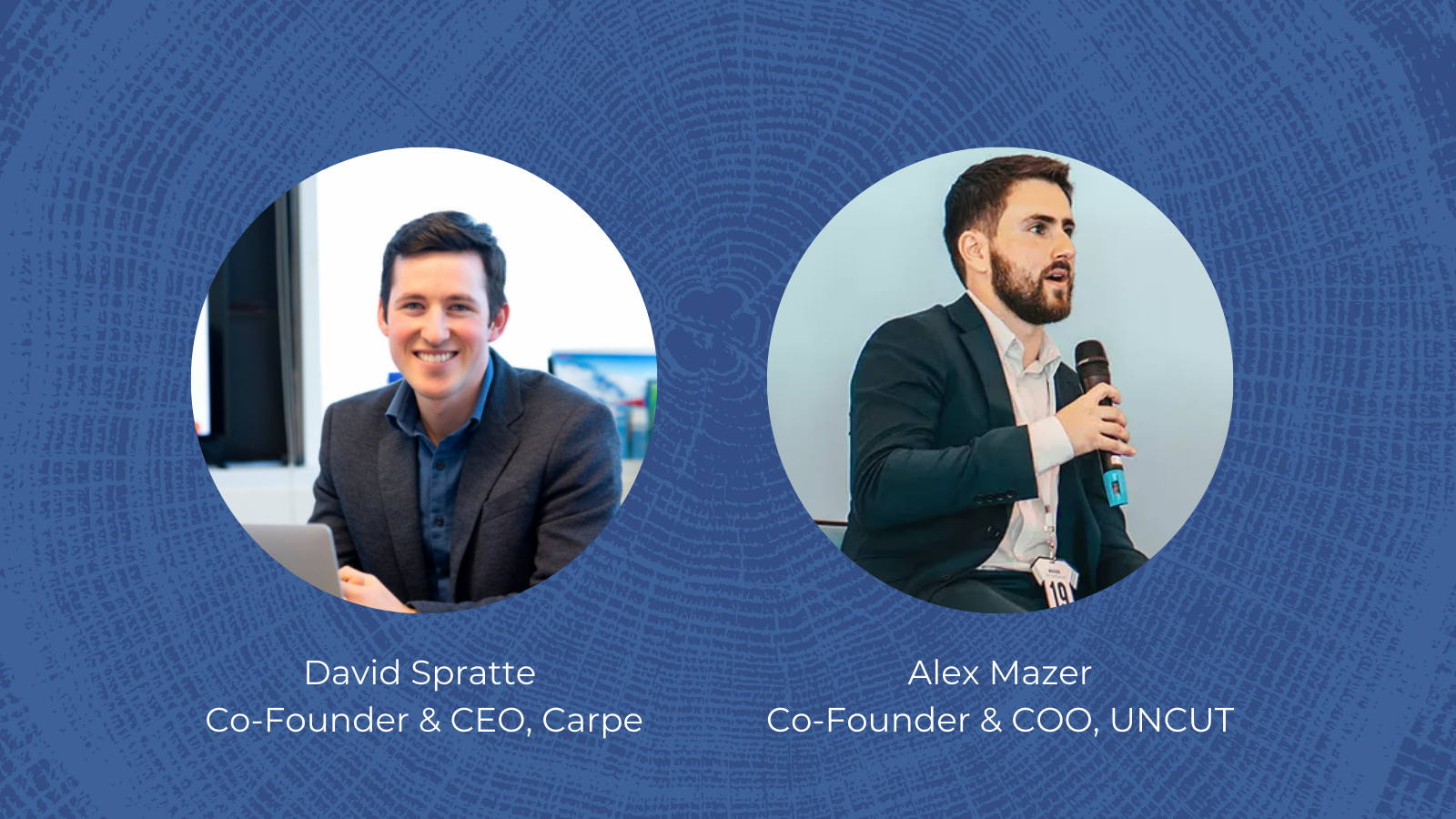

You’re on a roll with your startup. You’ve completed customer discovery and research and realize that your idea has legs. Now, you need a brand for your idea or product. But where do you start? How important is a brand? When is the best time to create or launch a brand? Innovate Carolina supports many students, faculty and alumni who are on this same quest. We’ve heard similar questions and checked in with faculty experts who have guidance to offer.

David Spratte, UNC -Chapel Hill alumnus, co-founder and CEO of Carpe, a company that’s producing the world’s first non-greasy, no-residue antiperspirant lotion to combat hyperhidrosis.
Alex Mazer, UNC Morehead-Cain scholar, co-founder and COO of student-led UNCUT, an organization that offers student-athletes a storytelling platform that shines a light on the human side of college athletes. Focusing on mental health, the organization helps show student-athletes they are far more than just their sport; they are complete people who are interesting, multifaceted and unique.
David Spratte: In the most simple terms, branding is becoming a meaningful part of your customers’ lives. This very basic principle ensures a competitor can’t simply enter the market, undercut your price with a similar product, and poach your customers. Brand is loyalty and relevancy, and it is crucial to long term survival and growth.
Alex Mazer: When customers use your product, the interaction is finite; when customers connect with your brand, the impact can be limitless. If you’re looking to create a long-term relationship with a stakeholder, having a strong and carefully crafted brand is essential.
David Spratte: We spent the early days of Carpe, developing our product and then validating that people actually wanted and needed sweat solutions outside of the underarms. Once we created a product that we believed in (and people loved), we took a step back and began to look at Carpe as a brand instead of a single product. Is this how everyone should do it? No. There are two main schools of thought when it comes to branding: 1) fire, ready, aim, which means just go – start selling your product, figure out who it resonates with, and build the brand around that loyal customer; and 2) brand forward, which just means spending a lot more time and resources on the front end doing all kinds of research, defining and building the brand values and messaging, and then launching with a very clear brand that’s going after a defined customer. For us, we didn’t know who the customer was going to be, so we went with the fire, ready, aim approach. There’s no one right answer, but they both have their pros and cons.
Alex Mazer: First, take the necessary time to be exhaustive about some of these foundational questions: what are your values? What words do you use to describe your brand? Why do you do what you do? Then, the rest is just making decisions that connect with those answers.
David Spratte: Define the brand core truths, cement messaging and voice, then establish a very clear identity. This process lays the foundation, and then you must have the discipline of remaining consistent in every single touch point. This doesn’t mean you can’t edit and tweak as you grow and learn, but it means your core brand truths remain the same.
After establishing your brand truths, then it’s a matter of amplification. We’ve done this by developing consumer advocates, hiring PR partners, expanding distribution, pushing into new marketing channels, and always talking with customers, learning what they like, don’t like, and what they need, and then acting upon those insights. Building a brand is not a one-and-done kind of thing – it happens every single day across every touch point. People will make assumptions about your brand based on the person they speak with over the phone when they have a question about their order. Every touch point, every day, and every interaction matters, so always keeping brand top of mind is key.


David Spratte: Our core values as an organization are focused around the themes of innovation, empowerment and excellence. These core values have shaped our brand and everything that we do on a daily basis. Carpe delivers innovative products, empowering our customers to live full lives sweat-free. We empathize with our customers, and therefore they trust us with solving their sweatiest problems. From product development to marketing tactics to customer service, everything we do is executed through the lens of innovation, empowerment and excellence.
Alex Mazer: While we work in student-athlete media, we position ourselves as a mental health and wellness brand. This is sometimes uncomfortable for typical sports fans, but that’s why our work is novel: it pushes boundaries, and thus, forces change.
David Spratt: Two things that we wish we would have known: 1) the importance of a brand guide; and 2) the questions we should have been asking customers.
On the brand guide part, we should have spent the time to build out a single source of truth for everything brand related a lot earlier than we did. Kasper and I always had an idea about the brand we wanted to create, but as we grew and added staff beyond just the two of us (adding internal and external employees and agencies), it became very difficult to communicate every single thing that we had in mind, which led to inconsistencies and confusion. Everyone has their own idea of what the brand is based on the limited information you share. Thus, by formalizing a brand guide, which is shared with everyone, you get alignment and consistency and avoid confusion. Even if you, as a founder, have a clear idea of what you are creating and why you are creating it, don’t assume that your team has that same vision. Build the guide and set it in stone. The most important thing that you can understand from your customers is why exactly they’re buying. The key to getting to the real answer, however, is knowing that most of the time, your customer can’t clearly articulate the why. You have to know the right questions to ask and really keep pressing to understand what the “trigger” was. Furthermore, your most valuable customers are the ones that are going to refer you to their friends and family. Focus on those people and understand who they are, so you can target more people like them, which should help drive word of mouth / organic growth.


David Spratt: Make sure you and all of your teammates are on the same page as to what your brand is; you can never spend too much time when it comes to getting on the same page here. Stakeholders must hear a consistent message from your advocates in order to truly develop a strong connection with your work. Regarding resources: Entrepreneurship Center at Kenan-Flagler Business School, Launch Chapel Hill, Innovate Carolina, 1789 and Adobe Creative Suite.